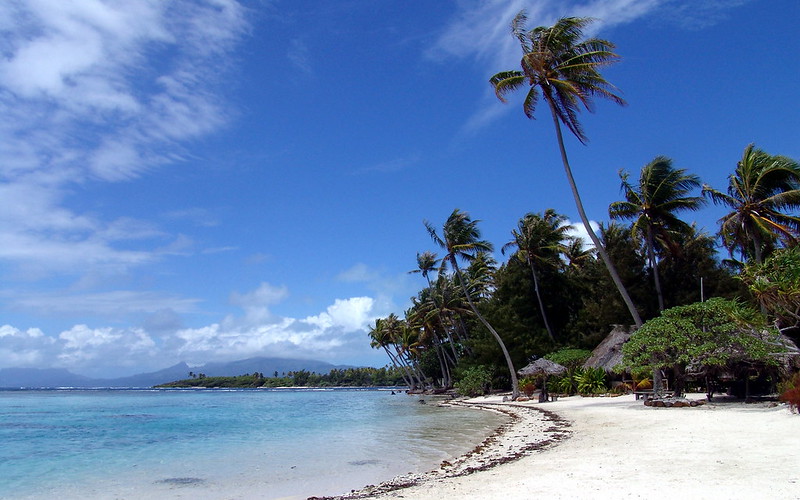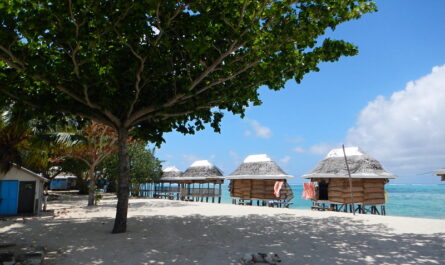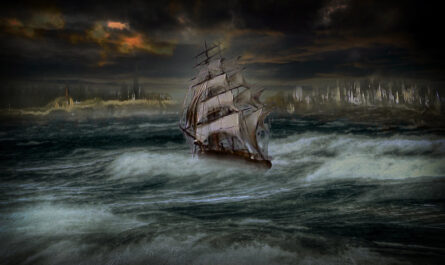The vastness of the Pacific Ocean, covering nearly one-third of Earth’s surface, posed an intimidating challenge for the ancient Polynesians. Yet, these master navigators achieved what would seem impossible: they traveled thousands of miles across open waters in small, double-hulled canoes without the use of modern navigation tools. Relying on the stars, ocean swells, bird behavior, and wind patterns, the Polynesians embarked on one of the greatest feats of human exploration long before Europeans charted their maps. Their voyages helped spread a rich cultural heritage that continues to thrive across the islands of the Pacific today.
This article delves into the extraordinary skill of Polynesian voyagers, the science behind their navigation techniques, their impressive seafaring traditions, and the legacy they left on the Pacific Ocean and its islands.
1. Polynesian Expansion: A Journey Across the Pacific
The Polynesians are part of the Austronesian-speaking peoples, who originated from Southeast Asia. They began expanding into the Pacific around 3,000 BCE, reaching the Solomon Islands by 1500 BCE. However, it wasn’t until around 800 CE that Polynesians undertook longer voyages, eventually settling in far-flung islands such as Hawaii, Easter Island (Rapa Nui), and New Zealand (Aotearoa). These journeys covered thousands of miles, with some routes stretching more than 2,000 miles across open ocean.
The reasons for their migration remain a subject of debate among scholars. Some suggest environmental pressures or overpopulation, while others believe religious or social factors drove their quest to explore new lands. Regardless of the reasons, Polynesian voyagers exhibited unparalleled courage and knowledge of the natural world.
2. The Outrigger Canoe: The Key to Polynesian Voyaging
Central to Polynesian voyaging was the design of the double-hulled outrigger canoe. These vessels were lightweight yet sturdy, capable of carrying entire families, livestock, and supplies across vast distances. The double-hull design provided greater stability in rough seas and allowed the canoes to hold heavy loads without capsizing.
Polynesian canoes were often constructed using materials found on the islands: tree trunks for the hulls, fibers from coconut palms for lashings, and leaves for sails. Despite these humble materials, the canoes were expertly engineered to withstand long voyages. The design of the sails—usually triangular and made from pandanus leaves—allowed the voyagers to harness the wind efficiently.
The construction of these canoes was not just a technical endeavor but also a spiritual one. Polynesian communities believed their ancestors guided them in the construction of canoes, and each part of the vessel was imbued with spiritual significance. Canoe building was a communal activity, involving skilled craftsmen who passed their knowledge down through generations.
3. Celestial Navigation: Guiding the Way by Stars
One of the most impressive aspects of Polynesian navigation was their ability to navigate by the stars. Without compasses, sextants, or maps, Polynesian voyagers used the stars as their primary guide, reading the night sky like a map. Polynesians were intimately familiar with the night sky, knowing the positions and movements of constellations, stars, and planets at different times of the year.
The most important star for navigation was the North Star (Polaris), which remains relatively fixed in the sky, serving as a constant point for direction. For southern navigators, the Southern Cross constellation was crucial. By measuring the height of these stars above the horizon, Polynesians could determine their latitude.
Additionally, Polynesian navigators used the concept of “star paths” to chart their routes. They memorized the rising and setting positions of stars relative to specific islands. Each star had a particular bearing, and by observing the stars, voyagers could determine the direction of their destination. It is said that some navigators memorized as many as 200 star paths.
4. Ocean Swells and Wave Patterns: The Sea as a Map
Beyond celestial navigation, Polynesians used the ocean itself as a guide. By observing the swells and wave patterns, navigators could determine their direction and distance from land. Ocean swells are large, consistent waves caused by distant weather systems. Even when out of sight of land, these swells maintain a consistent direction. Skilled navigators learned to read these swells and detect subtle changes that indicated the presence of islands, reefs, or underwater features.
Navigators could also detect “island shadowing,” a phenomenon where the presence of an island alters the direction or pattern of ocean swells. This allowed them to sense land before it was visible. Combined with their knowledge of wind patterns and currents, Polynesian voyagers could use the sea itself as a map.
5. Birds, Clouds, and Marine Life: Nature as a Compass
In addition to celestial and oceanic cues, Polynesians closely observed the behavior of birds, clouds, and marine life. Certain seabirds, such as frigatebirds and terns, never stray far from land, and their flight paths could indicate the proximity of islands. By following the direction of bird flights at dawn or dusk, navigators could pinpoint landmasses.
Cloud formations were another important indicator. Clouds often form over islands due to rising warm air, and certain cloud types, like cumulus clouds, were associated with land. Polynesians could distinguish these “land clouds” from regular weather patterns, using them as a visual cue when nearing land.
Marine life also played a role in navigation. Polynesians were familiar with the habits of fish and other marine animals, some of which are found only near land. For instance, schools of fish swimming toward shore in the morning could signal that land was nearby. The presence of particular types of seaweed and driftwood floating in the water was also a reliable sign that land was close.
6. Wayfinding: The Art of Non-Instrumental Navigation
The Polynesian navigation system is often referred to as “wayfinding”—a term that encompasses more than just following a map or chart. Wayfinding involves an intimate understanding of nature, the ability to observe and interpret environmental cues, and a deep spiritual connection to the sea. It is a holistic approach to navigation, one that relies on memory, intuition, and experience.
Traditional Polynesian navigators, known as “wayfinders,” underwent years of rigorous training to master this art. They learned from elder navigators who passed down their knowledge orally, often through songs, chants, and stories. These navigators had to memorize vast amounts of information, including star paths, swell patterns, bird migrations, and seasonal weather changes.
Wayfinders were highly respected in Polynesian society, as their skills were essential for survival. They not only guided canoes to new lands but also ensured the safe return of voyagers. In many ways, the success of Polynesian voyaging depended as much on the skill of the wayfinder as it did on the physical design of the canoe.
7. The Rediscovery of Traditional Navigation
For centuries, the art of Polynesian navigation was passed down through generations, but with the arrival of Europeans in the Pacific in the 18th century, these traditions began to wane. The introduction of Western navigation tools and maps led to the decline of traditional wayfinding methods. By the 20th century, much of this ancient knowledge was at risk of being lost.
However, a cultural renaissance in the 1970s led to the rediscovery of Polynesian voyaging techniques. In 1976, a group of Hawaiian navigators launched the Hōkūleʻa, a traditional double-hulled canoe, on a journey from Hawaii to Tahiti using only traditional navigation methods. This voyage proved the validity of ancient Polynesian navigation and sparked a renewed interest in preserving these skills.
Since then, the Hōkūleʻa and other traditional canoes have completed multiple voyages across the Pacific, visiting islands throughout Polynesia, Micronesia, and Melanesia. These voyages have not only revived the art of wayfinding but have also fostered a sense of cultural pride among Pacific Islanders.
8. Polynesian Legacy and the Spread of Culture
The success of Polynesian voyaging had profound cultural implications. As Polynesians settled new islands, they carried with them their language, customs, agricultural practices, and religious beliefs. This helped create a shared Polynesian culture that spans thousands of miles, from Hawaii in the north to New Zealand in the south and Easter Island in the east.
Polynesian society was highly organized, with strict social hierarchies and spiritual systems that revolved around the concept of “mana,” or spiritual power. The voyaging tradition itself was often seen as a manifestation of mana, with successful navigators being regarded as possessing great spiritual strength.
Polynesian oral traditions, passed down through chants and stories, often include references to voyaging. Many Polynesian legends tell of great navigators who discovered new lands, guided by the stars and the gods. These stories reflect the deep cultural importance of voyaging, not just as a means of transportation but as a spiritual and communal endeavor.
9. Conclusion: The Enduring Spirit of Polynesian Voyagers
The story of the Polynesian voyagers is one of the most remarkable chapters in human history. Armed with nothing more than their knowledge of the natural world and their faith in their abilities, these early explorers crossed vast stretches of ocean to settle some of the most isolated islands on Earth. Their accomplishments are a testament to the ingenuity and resilience of humankind.
Today, the legacy of Polynesian voyaging lives on through cultural revival movements and traditional navigation projects. Wayfinders continue to teach new generations the ancient art of navigating by stars, swells, and birds, ensuring that this remarkable knowledge is preserved for future explorers. Polynesian voyagers not only conquered the ocean but also left an indelible mark on the cultural and historical fabric of the Pacific.
Their story is one of perseverance, exploration, and an enduring connection to nature—an inspiration for all who seek to understand the mysteries of the sea and the stars.



